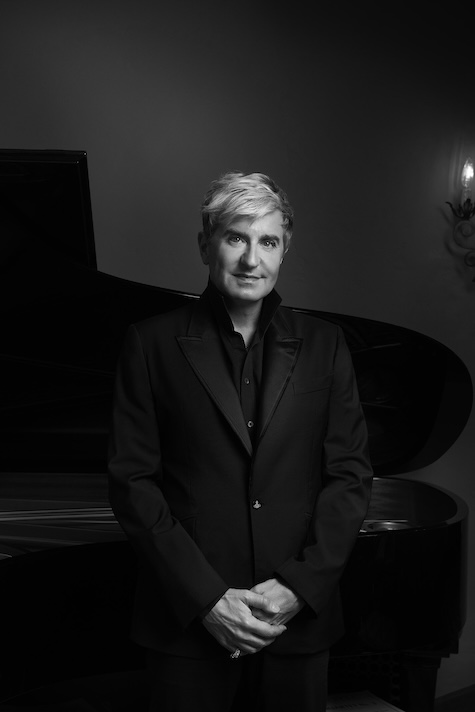Thibaudet brings lucid expertise and virtuosity to Debussy’s Préludes

One encounters a full Book of Claude Debussy’s Préludes infrequently in concert, the piano works usually played in small groupings. Rarer still is the opportunity to hear all 24 of Debussy’s Préludes in a single sitting.
Jean-Yves Thibaudet performed Debussy’s complete Préludes Sunday afternoon at Symphony Center, an event that drew a well-filled house even on a frigid day with the temperature hovering around zero.
Debussy’s Préludes are comprised of two Books, each containing 12 concise works. Nearly all the sketches reflect extra-musical inspirations—nature, a specific visual or art work, and even the comic-grotesque. Beyond the motivating factors, the Préludes display the French composer’s mastery and audacious individuality in writing for piano, displaying an advanced harmonic complexity and acutely terraced palette of colors and dynamics.
Thibaudet remains among the leading interpreters of French keyboard music today, as was shown in his fizzing performance of Saint-Saëns’ “Egyptian” concerto with the Chicago Symphony last season. Yet superb as his performances were, there was a graceful paradox in his Debussy at least in the early moments of Book I.
Debussy’s Préludes are atmospheric and allusive works, music that needs to breathe and that benefits from some expressive underlining and subtle rubato. As in his recording of this music, in the initial selections of Book I (“Danseuses de Delphes” and “Voiles”), Thibaudet played in a direct, forthright manner that seemed intent on registering the music clearly and skirting any hint of romantic sentimentality.
In his straightforward approach, Thibaudet adopted swift tempos and largely avoided undo lingering. At times one wanted more of the mystère quality and inward lyricism in works such, as “La Fille aux cheveux de lin” and especially the rather plain-spun “Des pas sur la niege.”
That said, Thibaudet’s concentration and transparency—-and his fidelity to Debussy’s markings—made the essence of each miniature come across with clarity and luminous precision, often making for fresh and engaging results. The pianist conjured a dauntingly powerful tempest in “Ce qu’a vu le vent d’Ouest,” delivered a witty and effervescent “La Danse de Puck,” and built up a spacious “La Cathédrale engloutie” from the subterranean bass rumbling to the majestic climax and hushed coda.
Book II, played after intermission, has fewer “hits,” but, on this occasion, the second set of Préludes provided the more varied and compelling performances.
In the harmonically layered “Brouillards,” Thibaudet conjured a subtle, undulating evocation of the foggy mists. He artfully balanced the swaying Iberian bass line and violent outbursts of “La puerta del vino.” The pianist was especially inspired in the humorous pieces, as with his playful and quirky rendition of a music-hall personage in “General Lavine—eccentric” and the affectionate Dickensian bustle of “Hommage a S. Pickwick Esq.”
One element of experiencing a live performance of Debussy’s Préludes that one doesn’t necessarily get from listening at home (especially for non-pianists) is that the visual makes one appreciate the difficulty and intensely demanding nature of so much of this music. Thibaudet’s technical arsenal remains in impressive repair and he blazed through the virtuosic complexities of “La puerta del vino,” the driving quasi-toccata of “Les tierces alternées” and, especially, the showpiece brilliance of “Feux d’artifice,” which concluded the afternoon in spectacular fashion.
The applause was long and enthusiastic for these communicative, finely polished, and unfailingly intelligent performances. After thanking the audience members for coming out on a “brutally cold” afternoon, the pianist closed the recital with Ravel’s Pavane pour une infante défunte—rendered in characteristically lucid fashion with simple dedication.
Alexandre Kantorow performs music of Brahms, Liszt, Bartók and Rachmaninoff, 3 p.m. February 2. cso.org